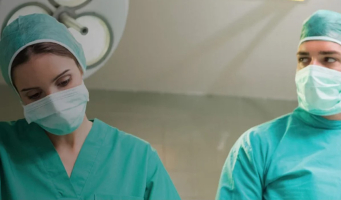Anaesthesia | Trauma | Principles of the management of head injury and brain protection



Principles of the Management of Head Injury and Brain Protection
Session Overview
Description
This session provides an overview of the fundamental principles of the management of moderate and severe traumatic brain injury, concentrating on the hours immediately post-injury.
After discussing classification of head injury the session covers assessment, resuscitation, radiology and referral, and the essentials of ongoing care in the intensive care unit. Factors influencing prognosis are also mentioned.
Learning Objectives
By the end of this session you will be able to:
- Classify traumatic brain injury according to severity
- Describe the initial assessment and management of the patient with traumatic brain injury
- Identify patients requiring CT scanning, intubation or referral to specialist services
- Recognize what is required on admission to the intensive care unit
- List the features determining prognosis after head injury
Prerequisites
Before commencing this session you should be familiar with:
- Anatomy of the central nervous system
- Physiology of the central nervous and cardiovascular systems
- Pharmacology of anaesthetics, vasopressors, intravenous fluids
- Anticonvulsants
In England and Wales, ∼1.4 million patients per year present to hospital with a traumatic brain injury (TBI). It is the most common cause of death under the age of 40 years [1](read details regarding the reference).
Overall, 61% of patients with known outcome have an unfavourable outcome (death or severe disability) at 6 months [2](read details regarding the reference).
While those aged 20-30 years are most likely to suffer TBI due to road traffic accident (RTA), the largest affected age group is those aged 70-90 years. In this group, the mechanism of injury is most commonly a fall from <2 meters.
TBI represents a major burden on family and society.
Prompt recognition of life-threatening primary injuries is essential as immediate treatment will reduce morbidity and mortality. Both intracranial and systemic causes of secondary injury are also amenable to intervention.
Anaesthetists have a central role in the care of the brain-injured patient, from the emergency department (ED), to theatre, to the ICU.
Appropriate care has the potential to prevent death and major disability.
- NiPHC Transition to Practice Program
- Posted By APNA - Australian Primary Healthcare Nursing Association - Transition to Practice Program
- Posted Date: 2024-11-28
- Location:Online
- Transition to Practice Program: helping nurses make the move into primary health care.
- Non-pharmacological Approaches to the Management o...
- Posted By eIntegrity Healthcare e-Learning
- Posted Date: 2024-11-28
- Location:Online
- This session presents a wide spectrum of non-pharmacological approaches to the management of chronic...
- Medications and Older Adults course
- Posted By eIntegrity Healthcare e-Learning
- Posted Date: 2024-11-28
- Location:Online
- This session describes the physiological changes that occur with ageing and the effects these change...
- Common Pain Conditions in Older People course
- Posted By eIntegrity Healthcare e-Learning
- Posted Date: 2024-11-28
- Location:Online
- This session describes some of the most common conditions that cause pain in older people, the manag...
- Assessment of Pain in Older Adults course
- Posted By eIntegrity Healthcare e-Learning
- Posted Date: 2024-11-28
- Location:Online
- This session describes the assessment of pain in older adults and the range of assessment tools avai...


